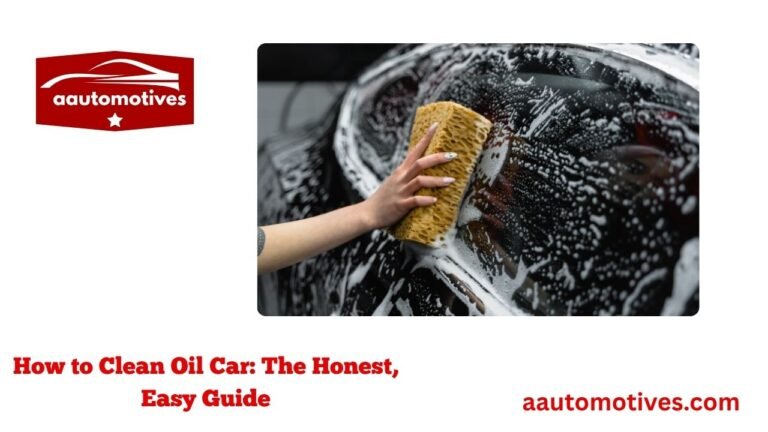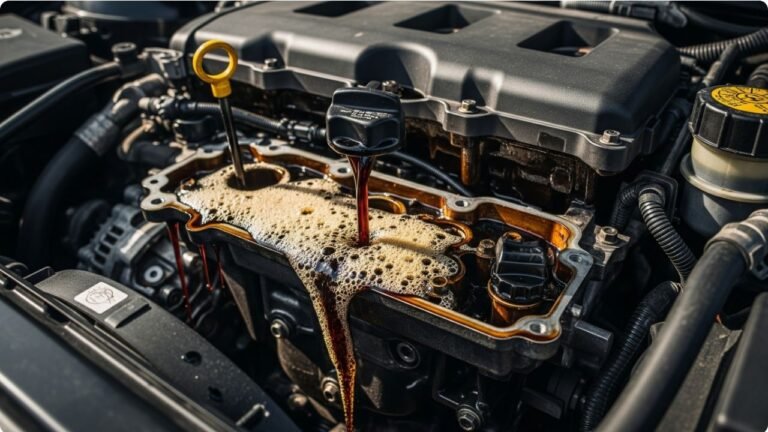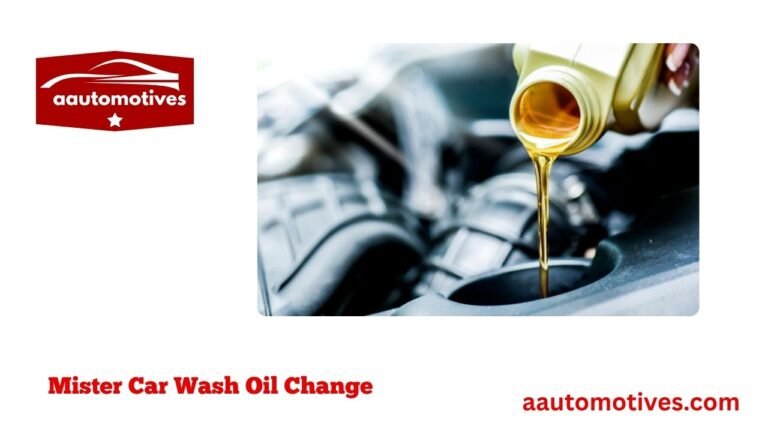How to Put Fuel Injector Cleaner in Car

Have you ever felt your car acting up—like it’s hesitating when you press the gas or shaking a bit more than usual? Maybe the engine just doesn’t sound as smooth as it used to. I’ve been there. And let me tell you, one simple fix that often works like magic is using a fuel injector cleaner. It’s easy, affordable, and something you can do yourself in less than ten minutes.
In this guide, I’ll walk you through how to put fuel injector cleaner in car step by step. Whether you’re a new driver or someone who’s been on the road for years, you’ll find this process surprisingly simple. I’ll also share some personal tips, stories, and even common mistakes to avoid—because yes, I’ve made a few myself!
What Is Fuel Injector Cleaner and Why Should You Care?
Think of your car’s fuel injector system like a coffee machine. If you don’t clean it often, it clogs up. That’s basically what happens inside your engine over time. Dirt, carbon, and leftover fuel residues start sticking to the injectors. These injectors are tiny nozzles that spray fuel into your engine. If they’re clogged, the engine can’t breathe properly—and you’ll feel it.
A fuel injector cleaner is a specially formulated chemical you pour into your gas tank. It travels through the system and cleans the gunk out of the injectors. It’s like mouthwash for your engine!
When I first used it, I noticed my car started more smoothly the next morning. It also helped improve my mileage. I wasn’t sure it would make a difference, but honestly, it did. And ever since, I’ve made it part of my car’s regular upkeep.
Here are some common signs that your car might need a fuel injector cleaner:
- Slow or rough starts
- Shaky engine when idle
- Poor acceleration
- Drop in fuel economy
- Engine misfires or knocking sounds
Cleaning your injectors won’t fix every engine issue, but it’s a great place to start.
When Is the Right Time to Use Fuel Injector Cleaner?
Timing matters. You don’t need to use it every time you fill up. But skipping it completely can lead to issues down the road—literally!
So how often should you use it? Most mechanics recommend every 3,000 to 5,000 miles. I do it about every 2 to 3 months. Especially after long drives or if I’ve been stuck in traffic a lot. City driving tends to cause more buildup.
But here’s the thing—not all cars need it as often. Older vehicles with high mileage benefit the most. Newer cars? Not so much, unless you’re using low-quality fuel or you’ve been noticing performance drops.
Here’s a simple table to help you figure it out:
| Driving Condition | Frequency to Use Cleaner |
|---|---|
| City traffic (stop & go) | Every 3,000 miles |
| Highway driving | Every 5,000 miles |
| High mileage vehicle | Every 2,500–3,000 miles |
| Newer cars (under 3 yrs) | Every 6,000 miles |
| After long trips | Before next fill-up |
Remember: Overusing it won’t hurt, but it won’t help more either. It’s like flossing—you want to be consistent, not obsessive.
How to Put Fuel Injector Cleaner in Car (Step-by-Step)
Okay, here comes the good stuff. You’re probably wondering, “Can I really do this myself?” The answer is YES. I’ll explain everything clearly, like a friend showing you over your shoulder.
Here’s what you’ll need:
- A bottle of fuel injector cleaner (make sure it’s the right one for gasoline or diesel, depending on your car)
- A gas tank that’s almost empty
- A gas station nearby to fill up
Step-by-Step Instructions
- Choose the Right Cleaner
Walk into any auto store or check online—there are tons of options: Chevron Techron, STP, Lucas, and more. Read the label. Make sure it matches your fuel type. Some are made for direct injection engines, which are becoming more common these days. - Wait Until Your Tank Is Low
This matters more than you’d think. You want the cleaner to mix well with fresh fuel, not get diluted in a full tank of old gas. - Open the Gas Cap
Turn off the engine, get out, and open the fuel door just like you do when filling up. Nothing fancy here. - Pour in the Cleaner
Unscrew the cap on the fuel injector cleaner bottle. Most come with a narrow spout that fits easily into the fuel neck. Slowly pour the whole bottle in. Yep, the whole thing—don’t save half for later. It’s designed to be used all at once. - Fill Up the Tank Right After
This is key. You want the cleaner to blend with fresh fuel and start working immediately. Fill the tank to full capacity. - Drive Normally
That’s it! No need to do anything special. Just drive as you normally would. Over the next few miles, the cleaner will begin removing carbon deposits from the injectors, valves, and combustion chamber.
I remember doing this the first time on a road trip. I was halfway across the country when my engine started feeling rough. After using the cleaner and driving for an hour, it felt like a weight had been lifted. The engine smoothed out, the power came back, and I could almost hear the car say “thank you.”
Top Benefits of Using Fuel Injector Cleaner
You may be thinking, “Okay, sounds simple enough—but does it actually work?” Trust me, it does. Here’s what I personally experienced, and what most drivers report:
- Better fuel efficiency – I gained around 2–3 extra miles per gallon.
- Smoother engine performance – Less noise, fewer vibrations.
- Improved acceleration – The car doesn’t lag when I press the gas.
- Fewer emissions – Good for your car, and a little better for the planet.
- Longer engine life – Clean injectors mean less wear over time.
One tip: don’t expect overnight miracles. It usually takes a full tank of fuel for the cleaner to do its job. So give it time, and you’ll notice a gradual improvement.
Which Fuel Injector Cleaner Is Best?
Let’s talk brand talk. You’re not alone if you feel overwhelmed standing in the auto aisle looking at 20 different bottles. I’ve tried a few myself and here’s a quick comparison of some top-rated ones:
| Brand | Best For | Price Range | My Experience |
|---|---|---|---|
| Techron | Overall cleaning power | $$ | Consistently smooth |
| Lucas | High-mileage engines | $$ | Works well over time |
| STP | Budget-friendly performance | $ | Great for quick fix |
| Sea Foam | All-in-one treatment | $$ | Strong, multi-use |
| Gumout | Direct injection engines | $$ | Targeted and effective |
I personally like Techron because it’s widely trusted and has always worked for me. But any of the above will do the job if used properly.
Common Mistakes to Avoid When Using Fuel Injector Cleaner
Now that you know the steps, let’s talk about what not to do. These are small things, but they can make the difference between the cleaner doing its job—or being a total waste.
Adding Cleaner to a Full Tank
This is the most common mistake. If your tank is already full, the cleaner gets too diluted. Always wait until the tank is low before pouring it in, then fill it up right after. This way, the cleaner mixes evenly and effectively.
Using the Wrong Cleaner
Not all cleaners are the same. Some are made for gasoline engines, while others are designed for diesel. Using the wrong type won’t help your engine—and could possibly hurt it. Check your vehicle manual and the bottle label before buying.
Pouring in Too Much or Too Little
One full bottle per treatment is the rule. Don’t pour in just a little thinking it’ll be gentle, and don’t pour in two thinking it’ll work better. Stick to the directions. More isn’t always better!
Expecting Instant Results
This one’s more emotional than mechanical. I get it—you want to feel a difference right away. But the truth is, most changes happen slowly over the first 100–150 miles after treatment. Be patient. Let the cleaner do its work.
Maintaining Your Fuel System: Long-Term Tips
So you’ve used the cleaner, and now your car feels great. Awesome! But how do you keep it that way?
Here are some simple habits to maintain your fuel injectors:
- Use high-quality fuel – Cheap fuel often has more impurities that cause buildup.
- Avoid frequent short trips – Short drives don’t allow your engine to heat up fully, which causes carbon deposits to stick.
- Add cleaner regularly – Make it part of your routine every 3,000–5,000 miles.
- Replace your fuel filter – A clogged fuel filter can undo all your injector cleaning efforts.
- Listen to your engine – If it sounds rough, don’t ignore it. Your car talks, just not with words.
Keeping your fuel system clean is like brushing your teeth—do it often, and you avoid expensive problems down the line.
Fuel Injector Cleaner vs. Professional Cleaning
You might wonder, “Should I just get a professional to do this?” And that’s a valid question.
Here’s a quick comparison:
| Option | Cost | Pros | Cons |
|---|---|---|---|
| Fuel Injector Cleaner | $8–$15 | Easy, fast, DIY-friendly | Slower results, surface-level only |
| Professional Cleaning | $80–$150 | Deep clean, immediate improvement | Expensive, needs shop visit |
If your car is really struggling or you’ve never cleaned the injectors, a professional service might be worth it—at least once. But for regular maintenance, a bottle of cleaner does the trick just fine.
FAQs About How to Put Fuel Injector Cleaner in Car
1. Can I put fuel injector cleaner in a full tank?
Technically yes, but it’s not recommended. The cleaner will get diluted and be less effective. Always add it to a low tank before filling up.
2. How long does it take for the cleaner to work?
You’ll typically notice improvement within 50 to 100 miles of driving. In some cases, it may take a full tank or two.
3. Can fuel injector cleaner damage my engine?
Not if used correctly. Just make sure you choose a cleaner suitable for your fuel type and follow the instructions.
4. Should I use it before or after an oil change?
These are unrelated. You can use fuel injector cleaner anytime, but many people add it around the same time as oil changes for convenience.
5. Can I use it in a motorcycle or scooter?
Only if the bottle says it’s safe for small engines. Otherwise, you risk harming the fuel system.
6. What if I forget and drive with the cleaner in an almost-empty tank?
It’s not ideal. Try to fill up as soon as possible. The cleaner needs fuel to carry it through the system.
7. Do electric cars need this?
Nope. Electric vehicles don’t use gas or injectors, so fuel injector cleaner has no purpose in an EV.
8. Can I use it more than once in a row?
You can, but there’s no real benefit. Stick to the recommended schedule unless your mechanic says otherwise.
Final Thoughts: A Small Habit That Makes a Big Difference
I know it may seem like a tiny thing—pouring a bottle into your gas tank. But trust me, learning how to put fuel injector cleaner in car is one of those small habits that quietly saves you money, reduces stress, and keeps your car humming.
Cars are like people. They need regular care. And just like we sometimes need a detox, engines need a deep clean too. A good fuel injector cleaner is your car’s detox juice—simple, powerful, and restorative.
If you’re new to car maintenance, this is a great place to start. It’s hands-on but not messy. Technical, but not overwhelming. You don’t need tools, a garage, or experience—just a bottle, a pump, and a few spare minutes.
So next time your engine feels a little sluggish or your mileage dips, remember this little trick. Pull into a gas station, pour in that bottle, fill your tank, and drive off knowing you just did something great for your car.






